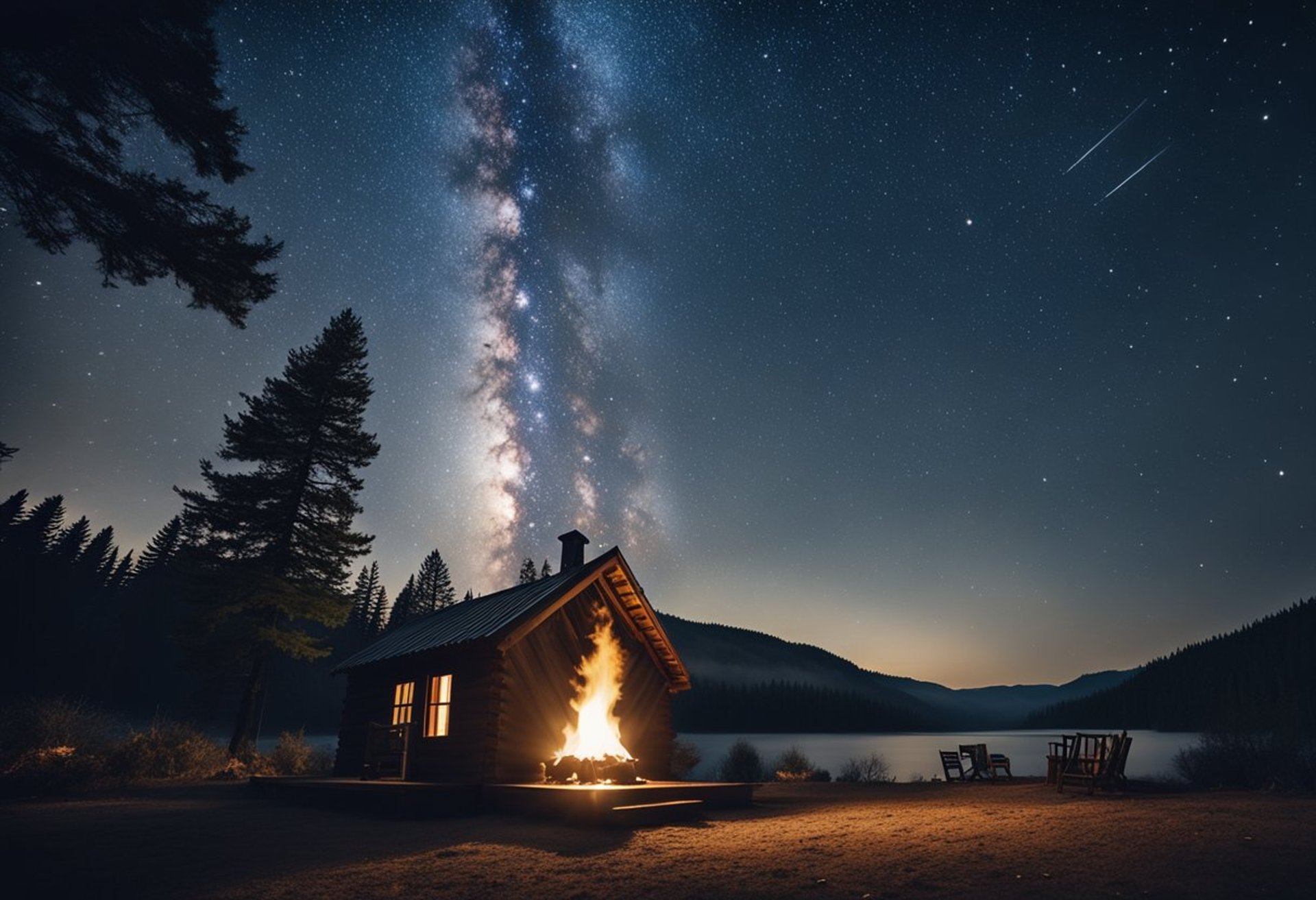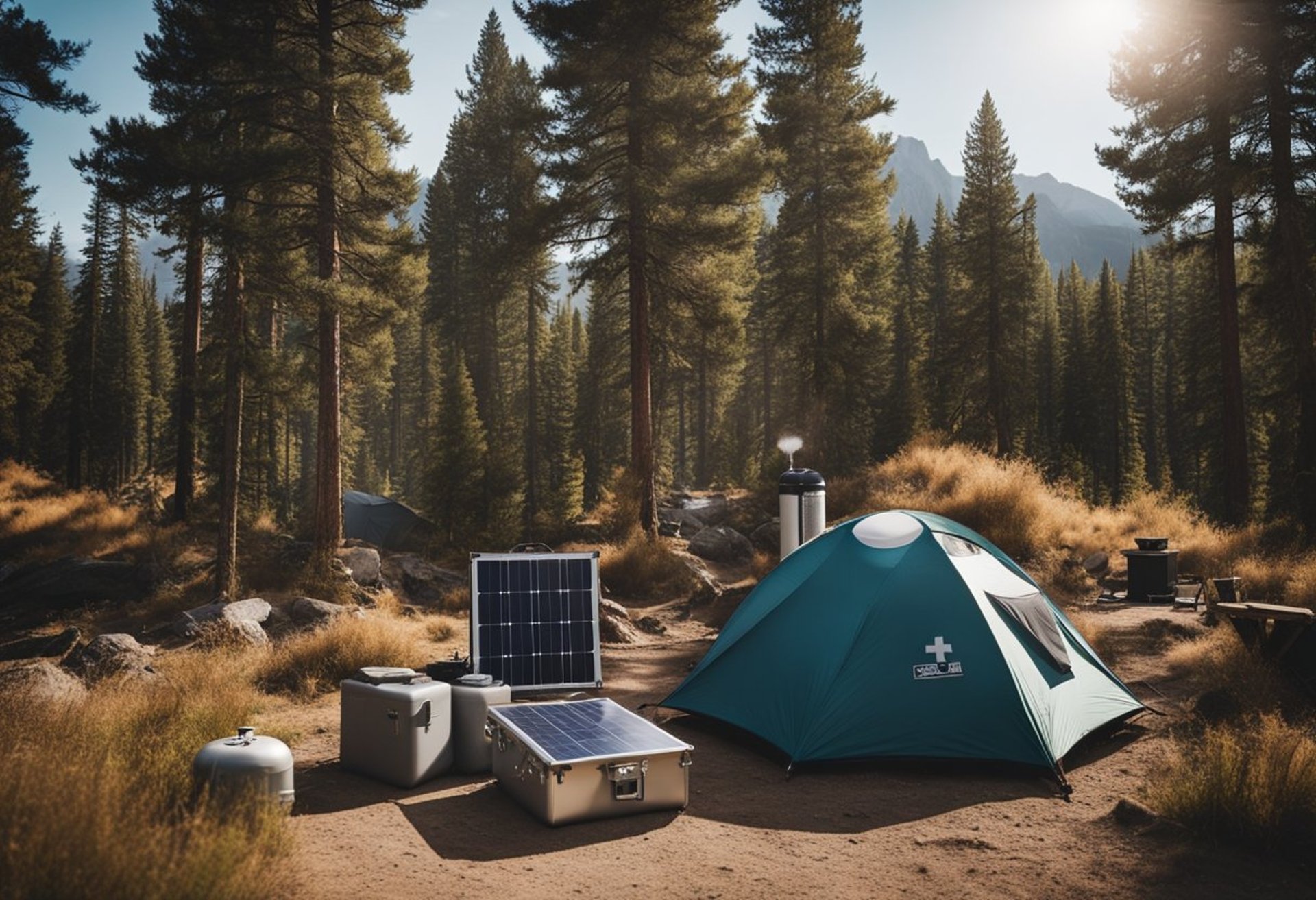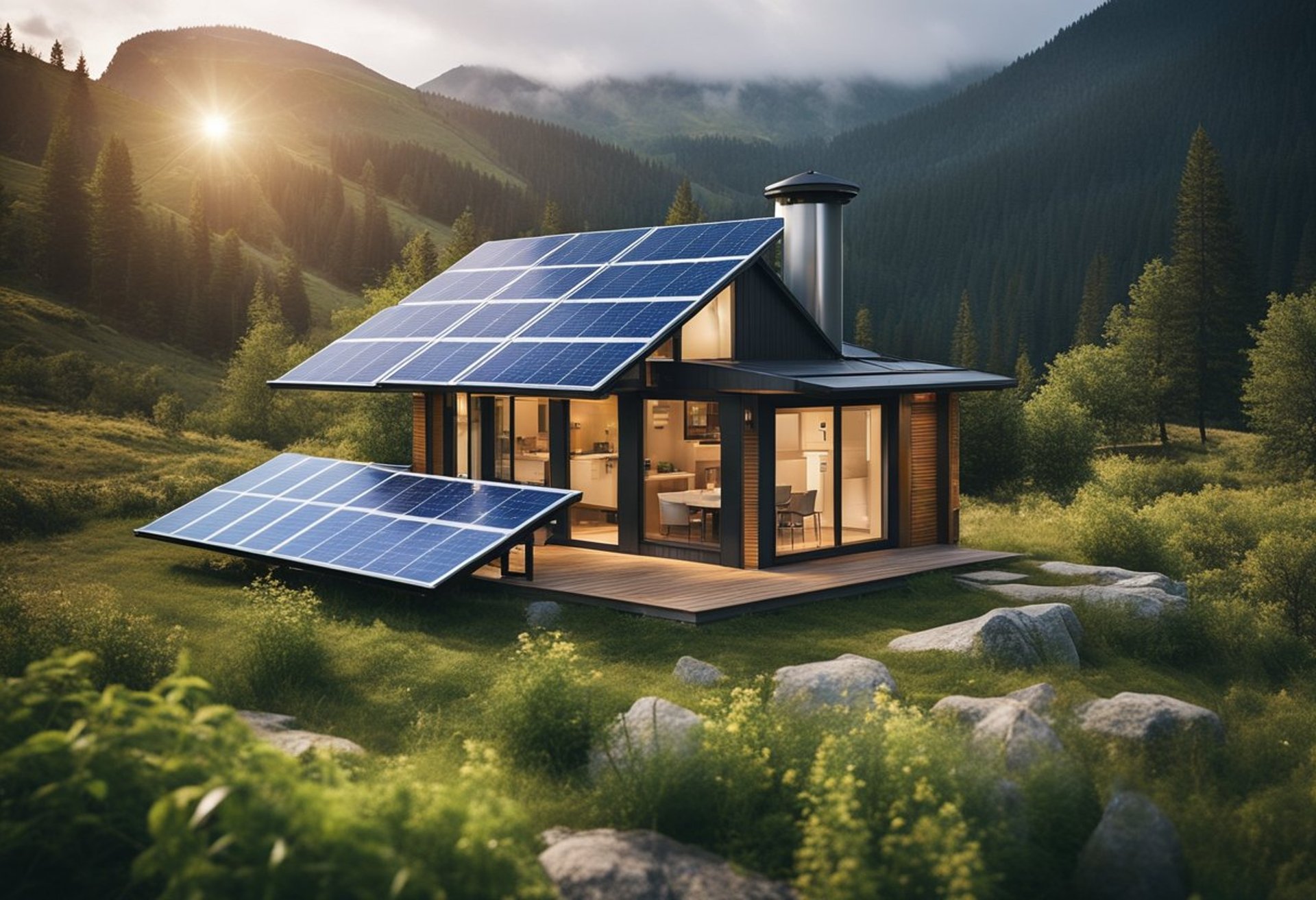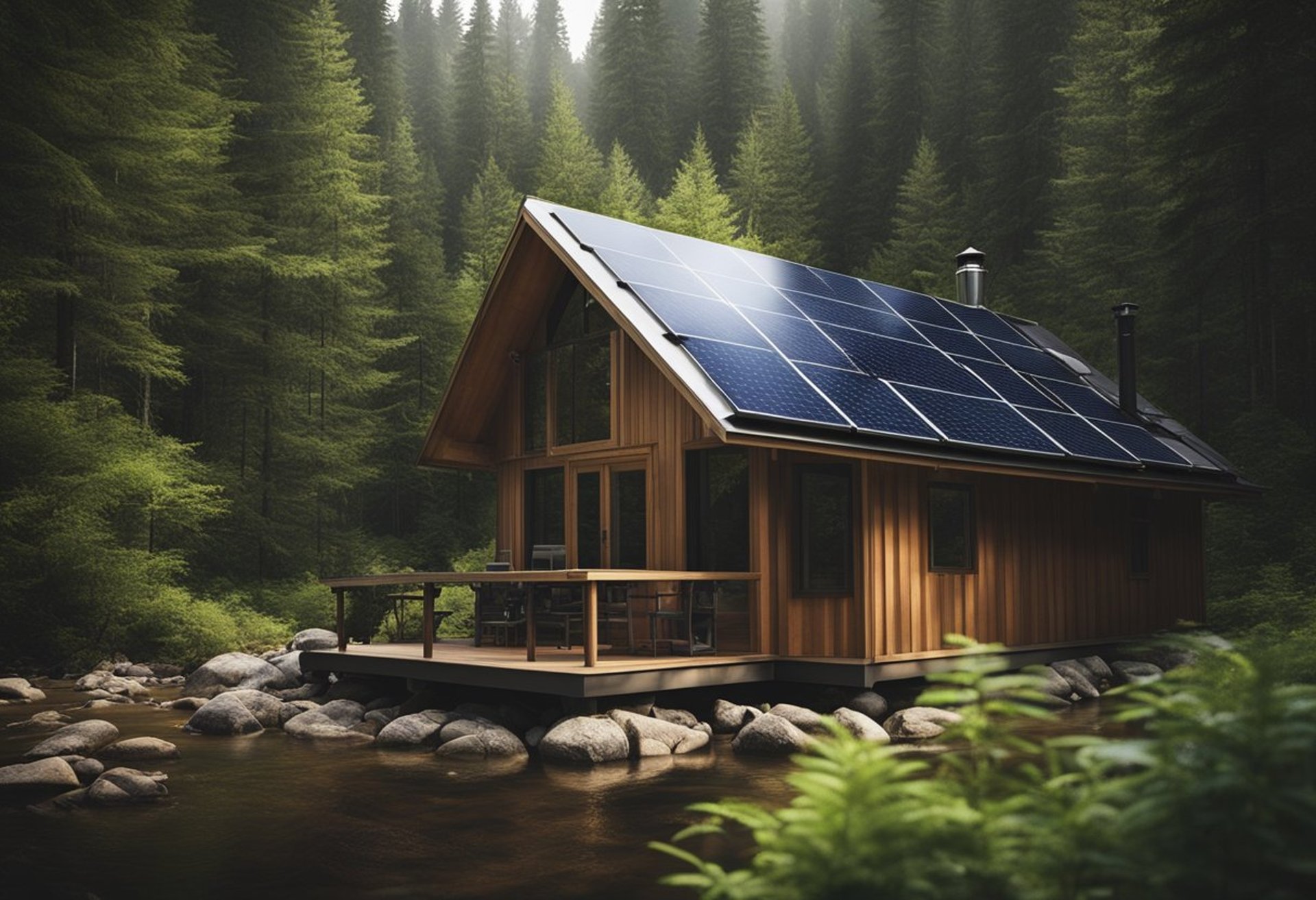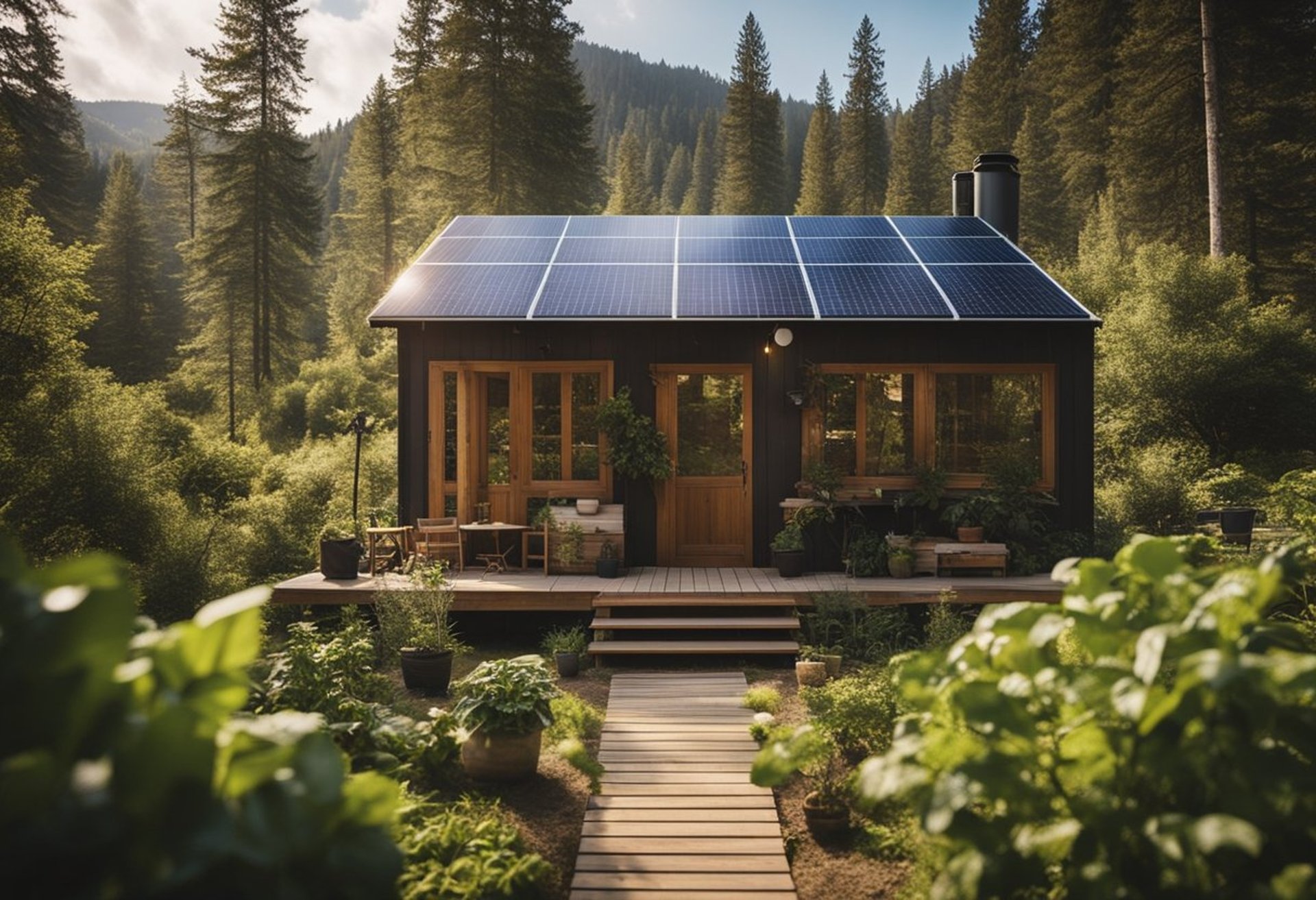Off Grid Survival: Essential Strategies for Self-Sufficient Living
Off-grid survival is becoming an increasingly relevant topic as more individuals seek freedom from urban life. It fosters independence and resilience, allowing people to live harmoniously with nature. Embracing an off-grid lifestyle requires thorough preparation and knowledge about essential resources like water, energy, and food production.
Off Grid Survival: Essential Strategies for Self-Sufficient Living
Off-grid survival is becoming an increasingly relevant topic as more individuals seek freedom from urban life. It fosters independence and resilience, allowing people to live harmoniously with nature. Embracing an off-grid lifestyle requires thorough preparation and knowledge about essential resources like water, energy, and food production.
Navigating the challenges of off-grid living involves strategic planning and practical skills. Individuals must understand their environment and create systems that support their needs sustainably. By integrating renewable energy sources and effective communication methods, one can thrive away from traditional infrastructures.
Living off the grid also emphasizes community and resource sharing. Establishing connections with like-minded individuals fosters a supportive network essential for survival. Ultimately, the journey toward off-grid lifestyle mastery involves dedication to continual learning and adaptability.
Key Takeaways
Off-grid living promotes independence from traditional systems.
Sustainable resource management is critical for survival.
Community connections enhance the off-grid experience.
Understanding Off-Grid Living
Off-grid living involves self-sufficiency and disconnecting from traditional power and utility systems. This lifestyle can afford greater independence but also comes with various considerations that aspiring off-grid dwellers must navigate.
The Basics of Off-Grid Living
Off-grid living typically means generating your own electricity, collecting water, and growing food. Many choose to utilize renewable energy sources such as solar, wind, or hydropower.
Basic components include:
Power Generation: Solar panels, wind turbines, or micro-hydro systems are common.
Water Source: Rainwater collection or well drilling are options.
Waste Management: Composting toilets and graywater systems help manage waste sustainably.
Understanding these components is crucial for sustainable off-grid living.
Benefits and Challenges
Living off-grid offers several advantages, including increased self-reliance and lower monthly expenses. Many appreciate the connection to nature and the minimalistic lifestyle it encourages.
However, challenges also arise:
Initial Costs: Setting up renewable energy systems and infrastructure can be expensive.
Maintenance: Off-grid systems often require regular maintenance and troubleshooting.
Isolation: Living in remote areas may lead to feelings of seclusion and limits on access to services.
Navigating these benefits and challenges is key for anyone considering this lifestyle.
Legal Considerations and Zoning Laws
Before pursuing off-grid living, understanding local laws is essential. Zoning laws can dictate what one can build and how land can be used.
Important factors include:
Building Codes: Many regions enforce strict codes for safety and environmental impact.
Land Use Restrictions: Some areas may have limitations on off-grid systems like wind turbines or solar panels.
Researching local regulations and possibly consulting with a legal expert ensures compliance while pursuing off-grid ambitions.
Planning Your Off-Grid Lifestyle
Adopting an off-grid lifestyle requires careful consideration of personal needs, location, and home design. These elements ensure sustainability and comfort while promoting independence from traditional utilities.
Assessing Your Needs
A thorough assessment of personal needs is essential before transitioning to off-grid living. Individuals should identify their daily energy consumption, water requirements, and food sources.
Energy Use: Calculate the total energy consumption for appliances, heating, and cooling.
Water Supply: Determine whether rainwater harvesting or a well is feasible.
Food Production: Evaluate space for gardening or livestock.
Strategically planning based on these needs determines the scale and resources required for an off-grid setup.
Choosing the Right Location
Selecting an appropriate location is critical to off-grid success. Individuals should consider climate, geography, and accessibility.
Climate: Analyze seasonal temperatures, rainfall, and natural disasters.
Geography: Look for arable land with sufficient sunlight for solar energy and fertile soil for crops.
Access: Ensure proximity to essential services or materials for building and maintenance.
Conducting thorough research, including local zoning laws and environmental regulations, prevents future complications.
Designing an Off-Grid Home
Design plays a significant role in off-grid living. It should focus on sustainability while being practical and comfortable.
Energy Sources: Incorporate renewable energy systems like solar panels or wind turbines.
Insulation: Utilize natural materials for efficient insulation to reduce heating and cooling needs.
Water Systems: Design systems for water collection, filtration, and storage.
Including energy-efficient appliances and smart design can minimize reliance on external resources, facilitating a truly independent lifestyle.
Off-Grid Water Solutions
Securing a reliable water source is essential for successful off-grid living. Various methods can be employed to collect, store, and purify water, ensuring sustainable access to this vital resource.
Rainwater Collection and Storage
Rainwater harvesting is an effective off-grid water solution. It involves capturing rainwater from roofs and other surfaces, redirecting it into storage systems like tanks or cisterns.
Key components include:
Catchment Area: roofs of buildings or specially designed structures.
Conveyance System: gutters and downspouts that transport water.
Storage Tanks: ranging from barrels to large tanks, typically made from food-grade polyethylene or galvanized steel.
Water collected this way is usually free and can provide a significant portion of a household's water needs. Regular maintenance and cleaning of gutters and tanks are crucial to prevent contamination.
Groundwater Wells and Pumps
Drilling a well is another viable option for accessing water off the grid. Wells can tap into underground aquifers, supplying a constant water source.
Considerations for wells include:
Location: Ensure it's situated away from potential contaminants.
Drilling Depth: The depth required varies based on local geology and water table levels.
Pumping systems are essential. They can be:
Hand Pumps: suitable for shallow wells.
Solar-Powered Pumps: efficient for deeper water extraction with minimal energy use.
Wells provide independence from surface water fluctuations but may require permits and professional drilling services.
Water Purification and Filtration
Once water is sourced, it needs purification to ensure safety. Various methods exist for effective water treatment.
Common purification methods:
Filtration Systems: such as activated carbon filters, remove impurities.
UV Purification: uses ultraviolet light to kill bacteria and viruses.
Boiling: a straightforward method to disinfect water.
Filters can be:
Portable: for hiking or travel.
Whole-House Systems: providing purified water for all domestic uses.
Understanding and implementing these purification methods ensures access to clean, safe water in off-grid scenarios. Each solution tailored to specific needs enhances overall sustainability.
Sustainable Energy for Off-Grid Living
Sustainable energy is vital for off-grid living, providing reliable power while minimizing environmental impact. Key options include solar energy, wind energy, and hybrid systems combined with backup generators. Each solution has unique advantages that cater to various needs and locations.
Solar Energy Solutions
Solar energy is one of the most popular choices for off-grid living. Solar panels convert sunlight into electricity, making them effective in sunny regions.
Key components include:
Photovoltaic panels: These capture sunlight and convert it into usable energy.
Batteries: Storing excess energy for use during cloudy days or nighttime.
Inverters: These convert direct current (DC) from solar panels to alternating current (AC) used by most household appliances.
A typical solar installation can range from a small system for basic needs to larger setups capable of powering an entire home. It's important to assess available sunlight and energy requirements to design an efficient system.
Wind Energy Potential
Wind energy can complement solar solutions, especially in areas with consistent winds. Wind turbines capture kinetic energy and convert it into electricity.
Considerations include:
Turbine size and type: Smaller turbines may be suitable for residential use, while larger ones require more space and investment.
Average wind speed: Ensuring that the location has sufficient wind to generate power effectively.
Installation height: Elevating turbines can enhance exposure to stronger winds.
Wind energy can generate significant power, reducing reliance on solar and ensuring a stable energy supply in varying weather conditions.
Hybrid Systems and Backup Generators
Combining solar and wind systems can optimize energy production. Hybrid systems maximize resource availability by utilizing both solar panels and wind turbines.
Backup generators serve as a reliable fallback. They can run on:
Propane
Natural gas
Diesel
Using backup generators ensures access to energy during prolonged low production from solar or wind resources. Proper planning for energy storage solutions and managing consumption will enhance the overall efficiency of the hybrid system.
Building Off-Grid Shelters and Cabins
When constructing off-grid shelters and cabins, choosing the right building materials, insulation methods, and sustainable features is essential. These elements contribute to a comfortable living environment while minimizing reliance on external resources.
Sustainable Building Materials
Selecting sustainable building materials is crucial for off-grid cabins. Options include reclaimed wood, bamboo, and straw bales. Reclaimed wood, for instance, reduces waste and offers a rustic aesthetic. Bamboo is lightweight and grows rapidly, making it both eco-friendly and efficient.
Consider utilizing compressed earth blocks or rammed earth techniques as well. These natural materials provide excellent thermal mass, helping to regulate temperature. Additionally, ensure that materials are sourced locally to lower the carbon footprint associated with transportation.
Using these sustainable materials not only benefits the environment but also enhances the durability and comfort of the cabin.
Cabin Insulation and Heating
Proper insulation is vital for maintaining a stable temperature in an off-grid cabin. Effective insulation materials include cellulose, sheep's wool, or advanced structural insulated panels (SIPs).
These materials help reduce heating costs and improve energy efficiency. A well-insulated cabin requires less energy for heating, making it easier to stay comfortable during colder months.
For heating, wood stoves are a popular choice in off-grid living. They provide a reliable heat source using local, renewable resources. Additionally, radiant floor heating can be employed for consistent warmth throughout the space.
Integrating passive solar design can also enhance heating efficiency. Strategic window placement allows for natural light and warmth from the sun.
Off-Grid Cabin Sustainable Features
Incorporating sustainable features into an off-grid cabin can significantly enhance self-sufficiency. Rainwater harvesting systems collect and store water for various uses. These systems reduce dependence on external water sources.
Solar panels can provide a renewable source of electricity, powering essential appliances and lighting. Investing in efficient battery storage allows for consistent energy availability.
Composting toilets are another sustainable feature, reducing water usage while providing natural fertilizer. Using greywater recycling systems can further minimize waste.
Altogether, these features create a living environment that not only supports independence but also aligns with ecological values.
Off-Grid Food and Agriculture
Growing food, raising livestock, and preserving harvests are essential components of off-grid living. These practices ensure a sustainable and self-sufficient lifestyle, reducing reliance on external food sources.
Growing Your Own Food
Growing a variety of crops is vital for self-sufficiency. Gardeners should consider a mix of vegetables, fruits, and herbs to create a balanced diet. Native plants can be easier to grow and more resilient to local conditions.
Key considerations:
Soil Health: Utilize compost and organic matter to improve soil fertility.
Crop Rotation: Helps prevent soil depletion and pest infestations.
Water Source: Establishing a reliable irrigation system, like rainwater collection, supports growth.
Heirloom seeds are often preferred for their ability to be saved and replanted, promoting food security over time.
Raising Livestock
Livestock can enhance food security by providing meat, dairy, and eggs. Common choices include chickens, goats, and pigs due to their relatively low maintenance.
Important aspects include:
Shelter: Animals require a safe, weather-resistant environment.
Feeding: Forage should be maximized; supplement with grains if necessary.
Health Maintenance: Regular check-ups and vaccinations are crucial to prevent disease.
Understanding the specific needs of each animal type contributes significantly to a productive off-grid farm.
Preserving and Storing Food
Food preservation methods are essential for storing surplus produce and livestock products. Techniques such as canning, dehydrating, and freezing can extend shelf life and prevent waste.
Key preservation methods:
Canning: Use pressure canners for low-acid foods and water baths for high-acid ones.
Dehydrating: This method removes moisture from food, inhibiting bacterial growth; consider sun, air, or electric dehydrators.
Root Cellaring: Utilize a cool, dark space for storing root vegetables and products such as squash.
Establishing a clear food storage plan helps maintain a well-stocked pantry throughout the year.
Health and Safety in Off-Grid Environments
Living off the grid requires careful attention to health and safety measures. Proper planning in emergency preparedness, first aid, and security can greatly enhance survival chances in isolated settings.
Emergency Preparedness
Emergency preparedness is crucial in off-grid survival. Individuals should assess potential risks based on the local environment, such as natural disasters, wildlife encounters, or equipment failures.
Creating a comprehensive emergency plan involves identifying escape routes and establishing a communication system with trusted contacts.
It’s essential to assemble an emergency kit containing:
Water purification tablets
Non-perishable food items
Flashlights and batteries
A multi-tool
A whistle for signaling
Regularly review and update supplies to ensure readiness.
First Aid and Medical Considerations
First aid knowledge is indispensable in off-grid scenarios. It’s vital to have a well-stocked first aid kit containing essential supplies such as bandages, antiseptic wipes, and pain relievers.
Training in basic first aid techniques can help address common injuries like cuts, sprains, or insect bites.
Consider learning how to manage severe situations, including:
CPR
Wound care
Shock management
Staying informed about local plants that can be used for medicinal purposes adds another layer of self-sufficiency.
Security and Self-Defense
In off-grid living, security is paramount due to potential threats from wildlife or trespassers. Establishing physical barriers, such as fences, can help deter intruders.
Individuals should also consider:
Motion-sensor lights
Warning signs
Campfire noise
Self-defense training is critical. Knowing how to handle potential confrontations can prevent escalation.
Carry personal alarms or pepper spray for added safety. Regularly assessing one's surroundings promotes awareness and preparedness against unexpected threats.
Off-Grid Communication and Connectivity
Effective communication is crucial for off-grid living. Various methods can ensure that one remains connected with the outside world, access information, and maintain safety.
Satellite and Radio
Satellite communication offers reliable options for off-grid connectivity. Devices such as satellite phones enable voice calls and texting in remote areas where cellular networks are unavailable. Popular options include Iridium and Globalstar devices, known for their global coverage.
Advantages of Satellite Communication:
Wide Coverage: Operates virtually anywhere on the globe.
Reliable Connection: Not affected by terrain or weather like radio frequencies.
Radio communication is another valuable tool. Ham radios, for instance, allow for local and long-distance communication. Proper licensing is generally required for ham radio use, and one must learn basic operation skills.
Internet Access
While limited, internet access can be achieved even off-grid. Satellite internet providers like HughesNet and Viasat deliver broadband services to remote locations. They require the installation of a satellite dish and can account for higher latency.
Key Considerations:
Data Plans: Different plans vary in speed and data caps.
Equipment Costs: Initial investment can be high, including installation.
Another option is to explore mobile hotspots. These devices can connect to cellular networks, allowing Wi-Fi access where applicable. Using solar-powered chargers can enhance device usability in remote areas.
Staying Informed
Staying informed is essential for safety and planning while off-grid. Various resources help individuals remain updated with relevant information.
Tools for Staying Informed:
Emergency Alerts: Sign up for local emergency warnings when navigating off-grid areas.
Local Community Networks: Joining online forums or local groups can provide valuable insights from those familiar with the region.
Portable weather radios are also crucial. They offer real-time weather updates, which are vital for preparing for severe conditions.
Maintaining communication and connectivity enhances safety and supports informed decision-making in an off-grid lifestyle.
Community and Networking
Creating a strong community and networking is essential for successful off-grid living. Establishing connections with others who share similar values and goals can provide support, resources, and shared knowledge.
Building a Support Network
Forming a local support network involves connecting with like-minded individuals. This may include joining off-grid living groups or attending workshops focused on sustainable practices.
Key Strategies:
Online Forums: Engage in discussions on platforms dedicated to off-grid living.
Meetups: Organize or attend local gatherings to share experiences and skills.
Social Media: Utilize groups on sites like Facebook to communicate regularly.
These networks can facilitate access to knowledge about local resources, trade opportunities, and potential collaborations on projects. Inviting someone to share their expertise fosters a collaborative atmosphere.
Participating in Local Trade
Local trade among off-grid communities enriches resource sharing and strengthens relationships. This practice allows individuals to barter goods and services, minimizing reliance on monetary transactions.
Benefits of Local Trade:
Bartering: Cultivate a system where skills or products can be exchanged directly.
Skill Sharing: Offer classes in gardening, woodworking, or natural remedies to learn from one another.
Resource Pools: Create communal pools for tools, seeds, or livestock, reducing individual costs.
Participating in trade increases resilience and supports the local economy while encouraging sustainable practices. It helps members rely less on conventional supply chains.
Community Living
Living in closer proximity to others enhances resource efficiency and collaboration. Off-grid communities often thrive on shared responsibilities and communal living arrangements.
Aspects to Consider:
Shared Resources: Utilize communal energy systems, irrigation, or gardens.
Collaborative Projects: Organize efforts for larger installations like water filtration systems or renewable energy sources.
Social Structure: Establish clear roles based on skills to promote harmony and efficiency.
Community living fosters a sense of belonging and encourages new members to acclimate quickly. It builds resilience as individuals work together to tackle challenges unique to off-grid lifestyles.

